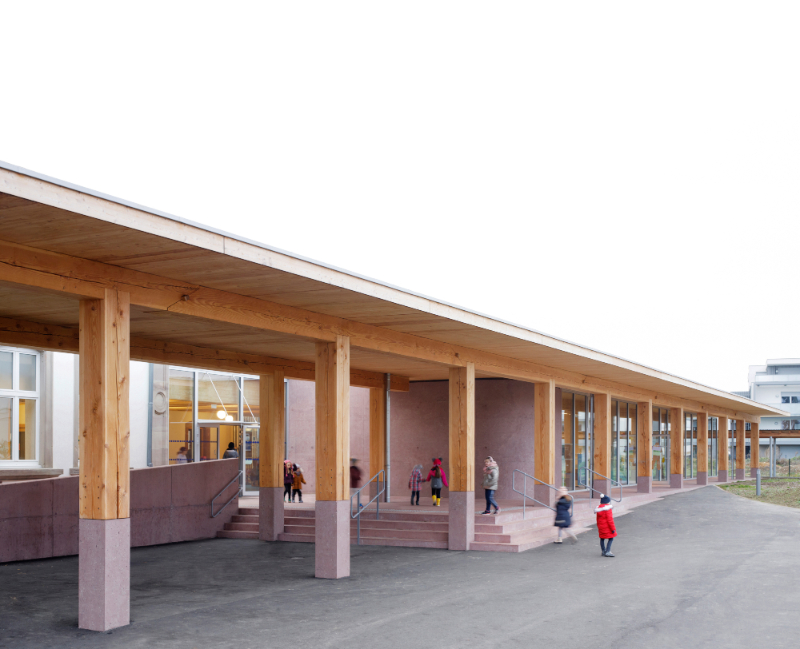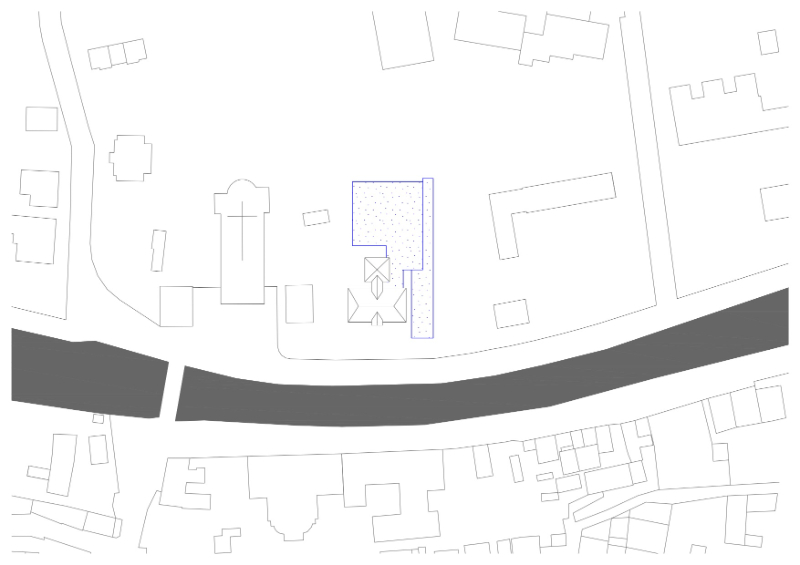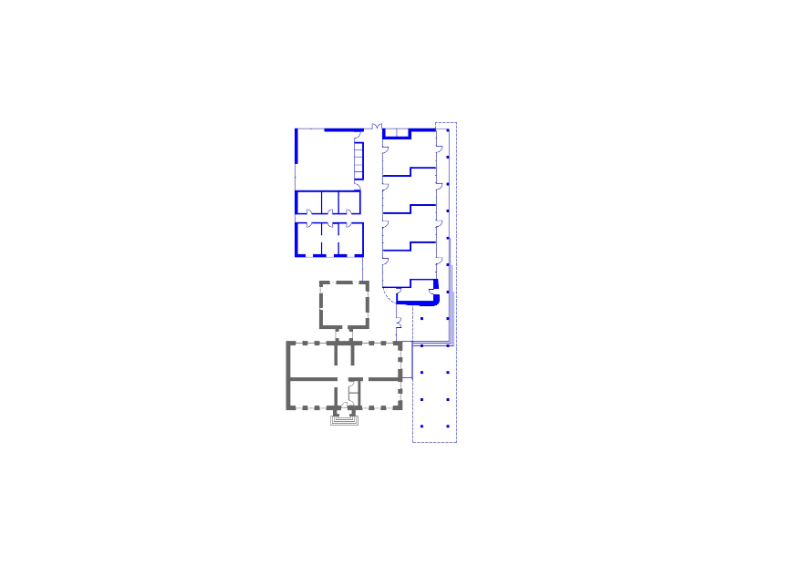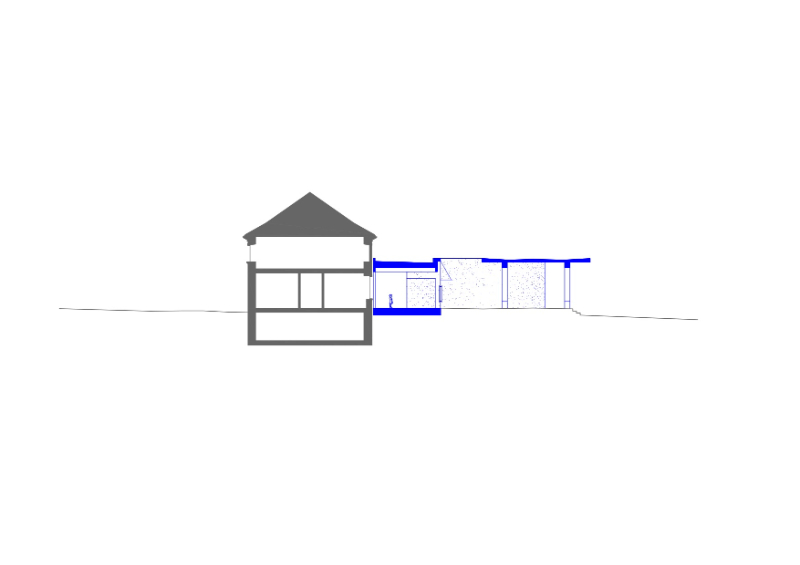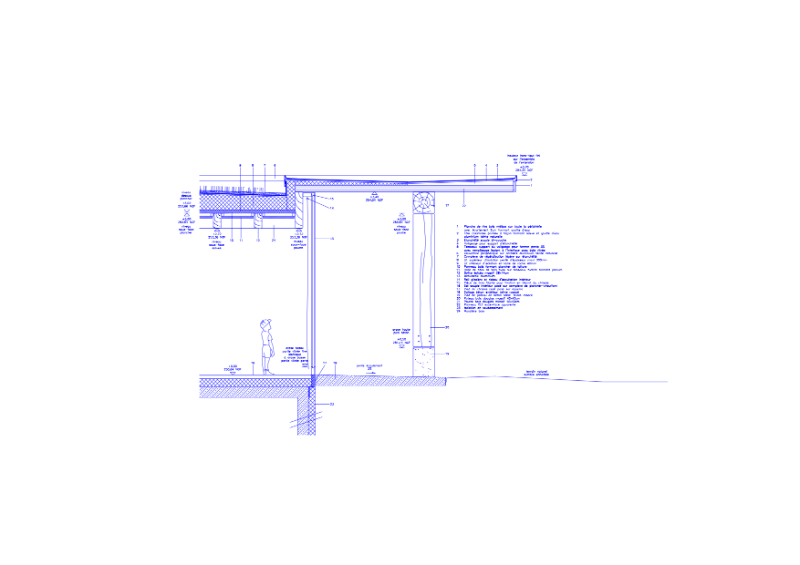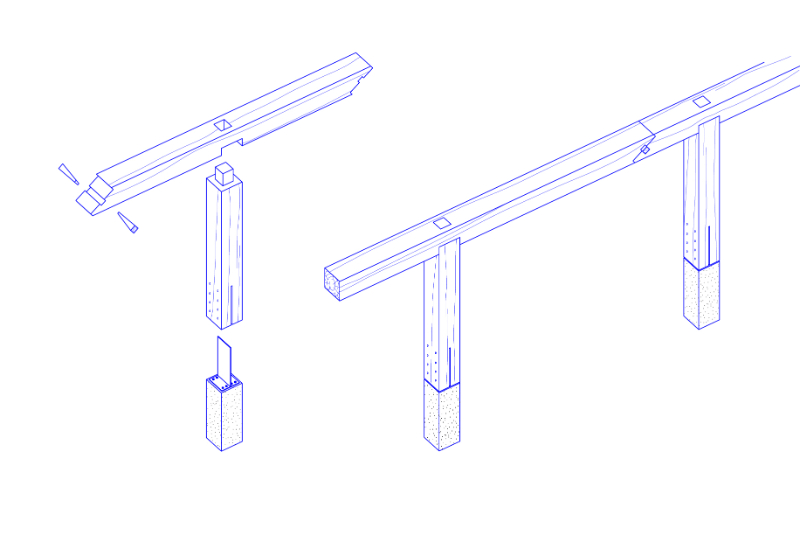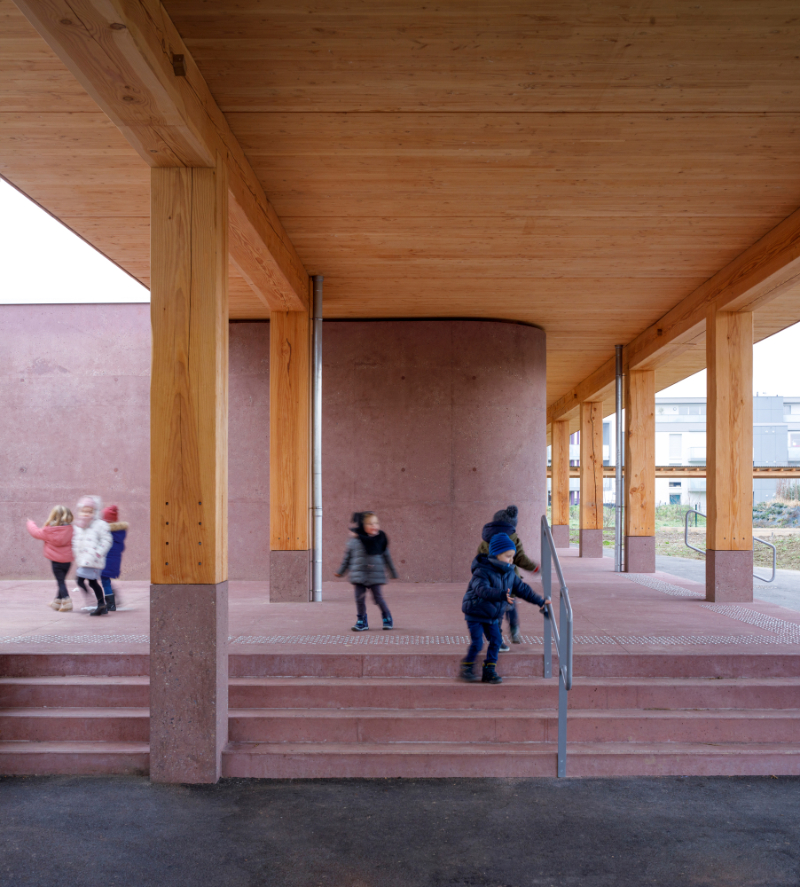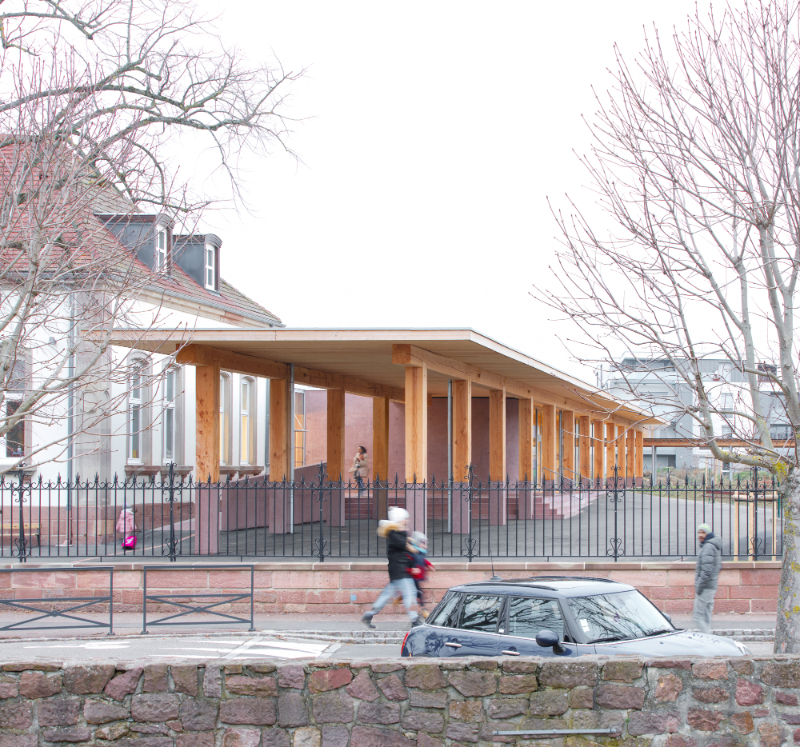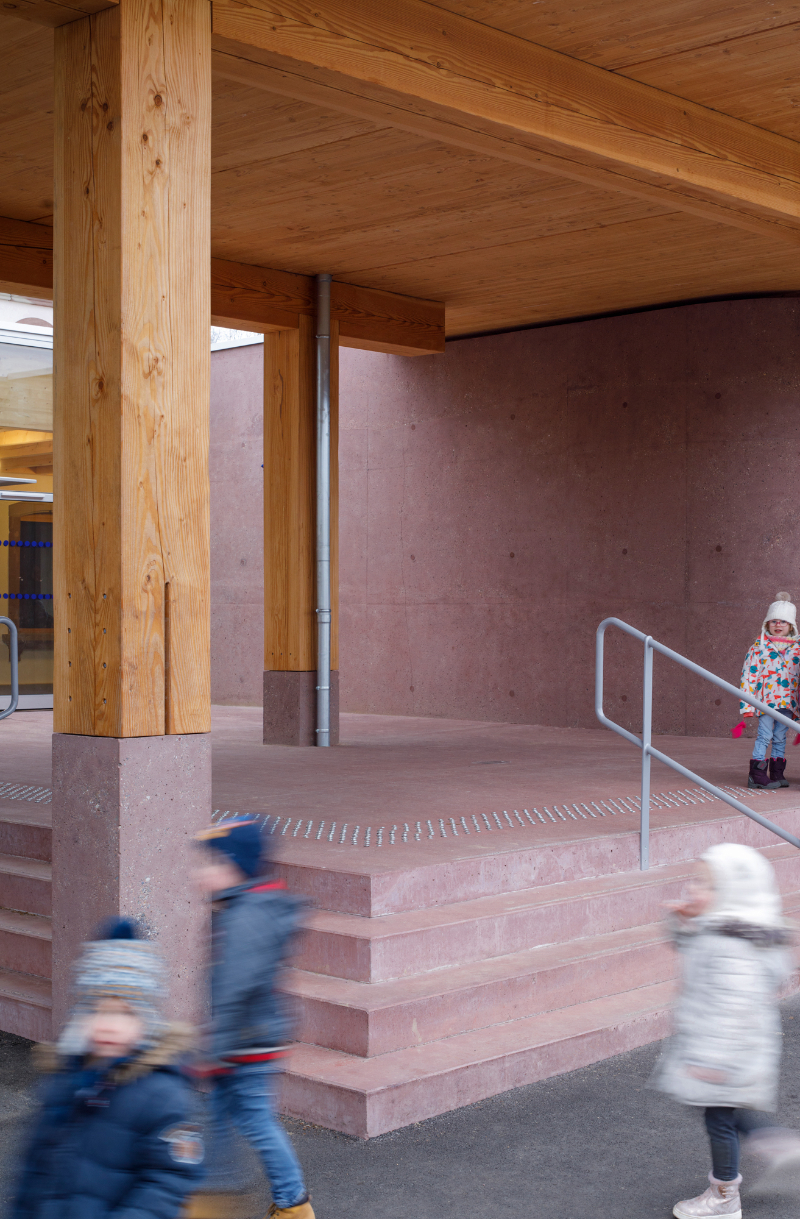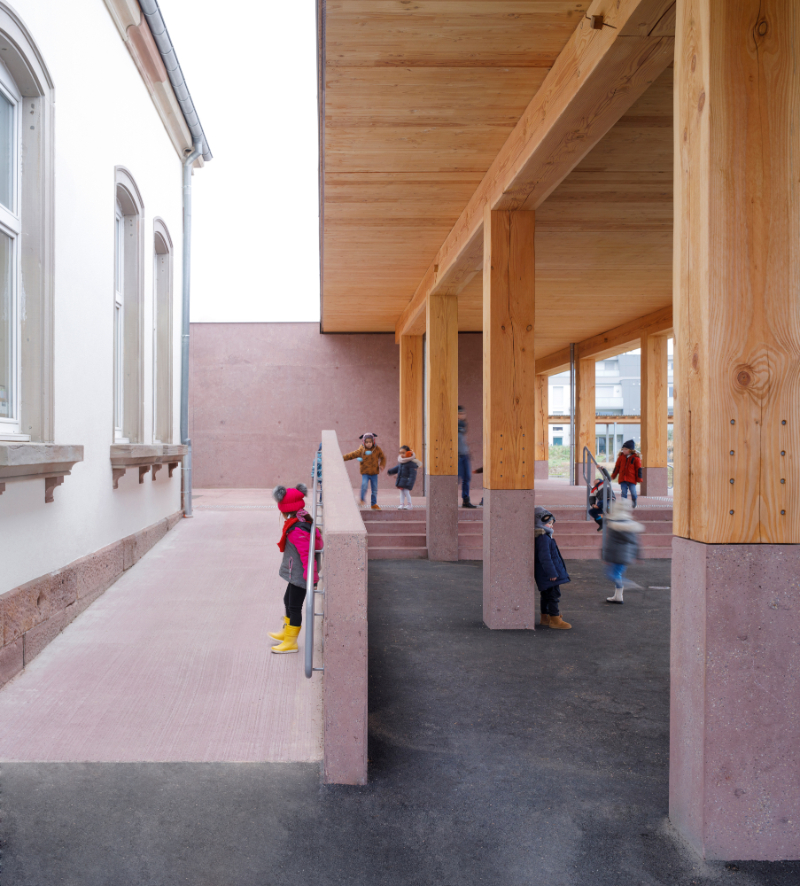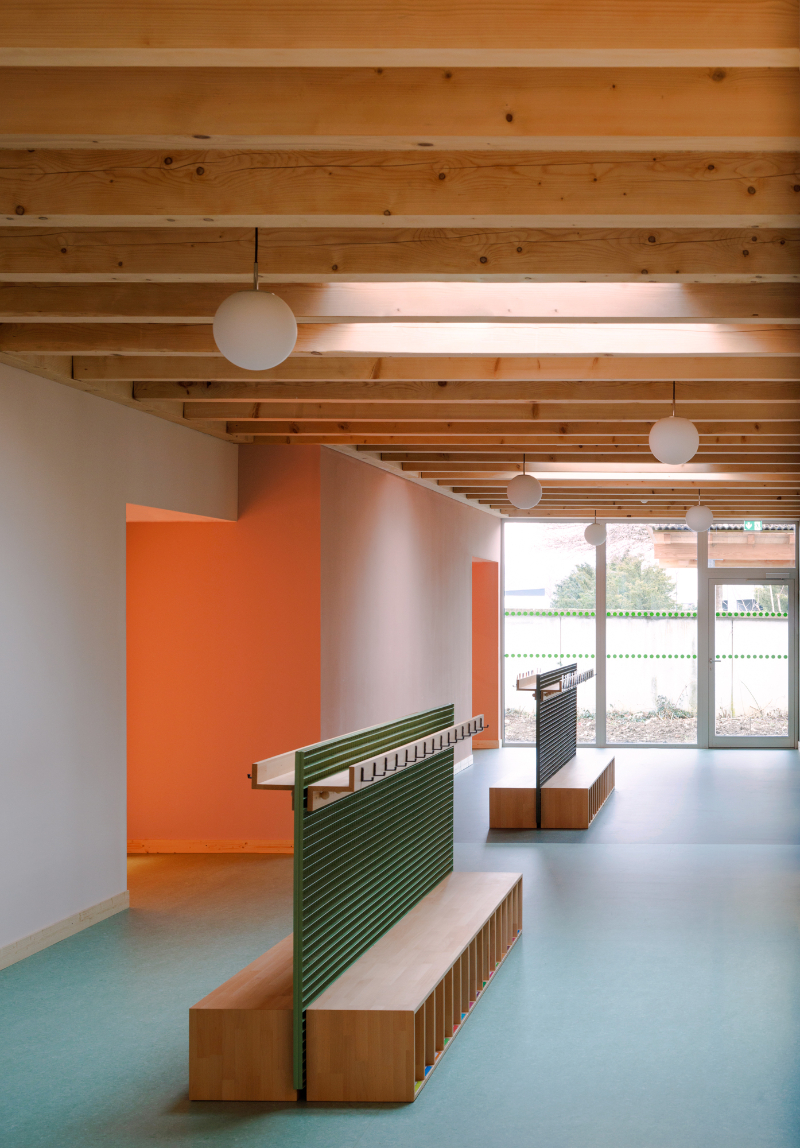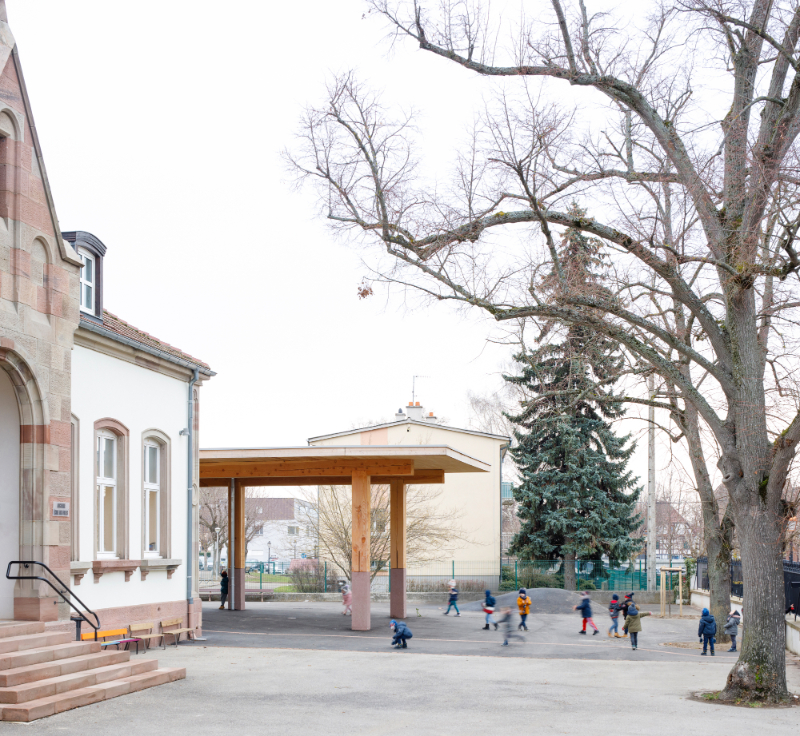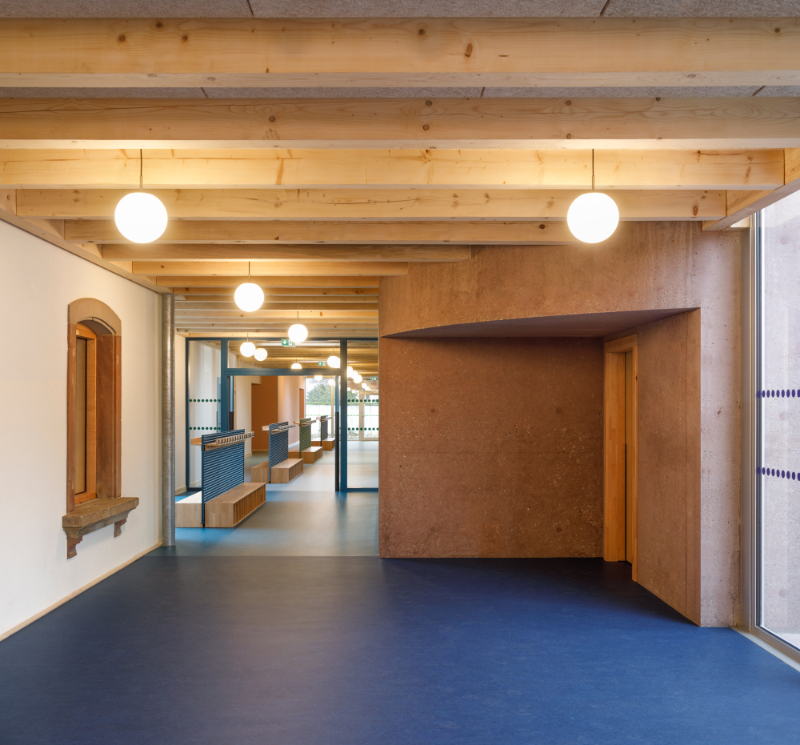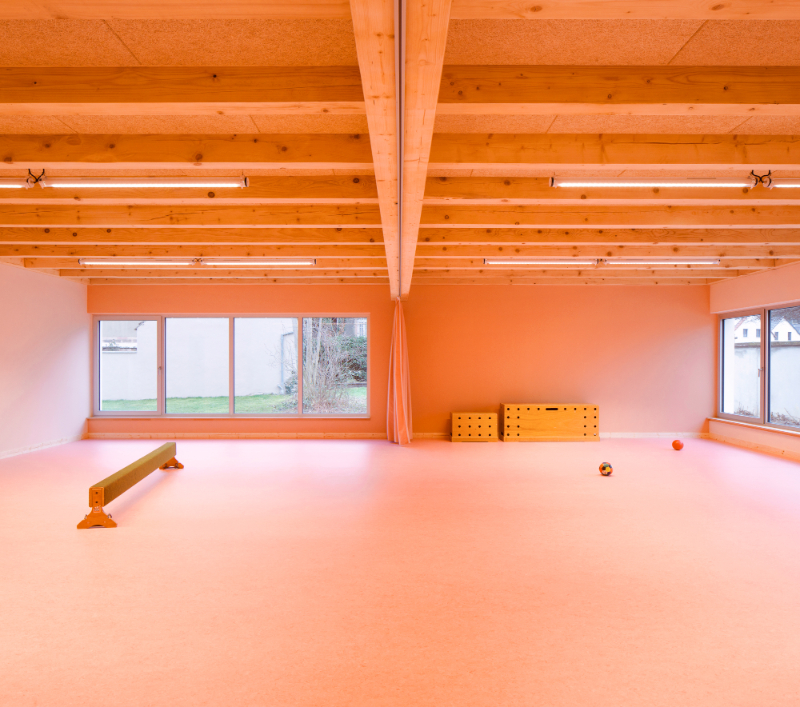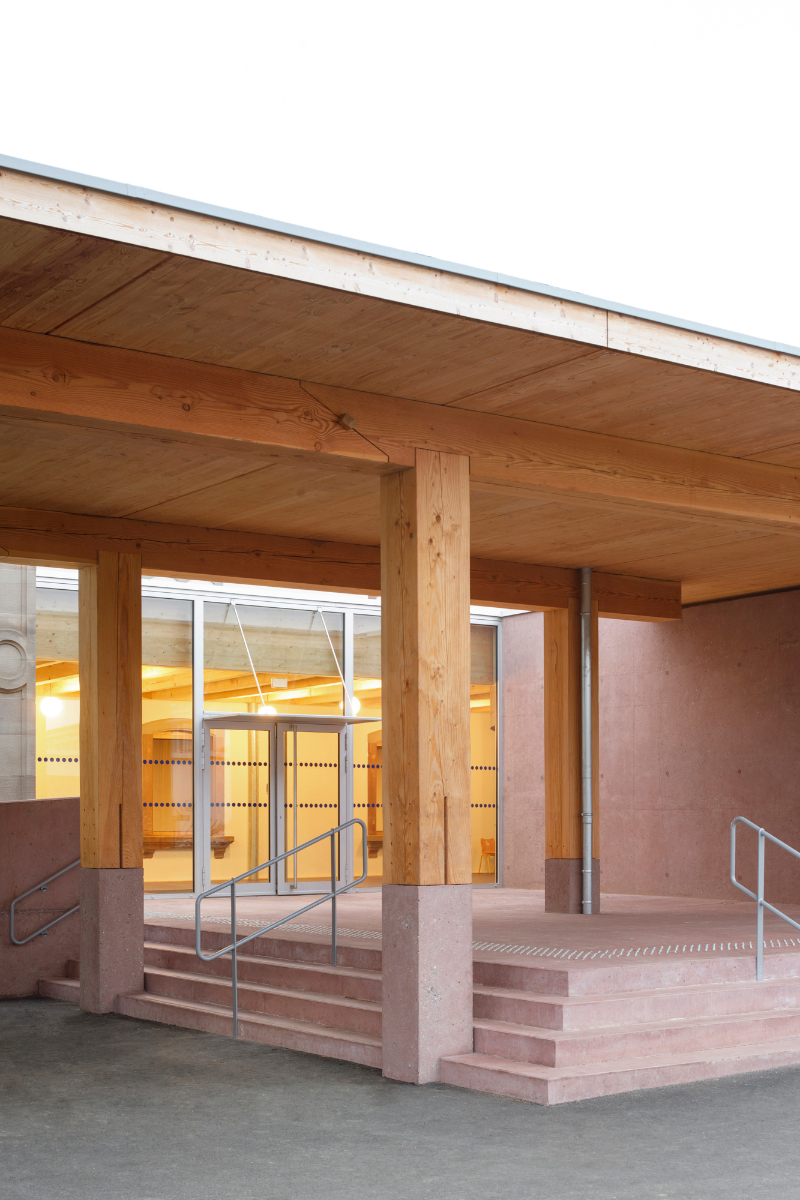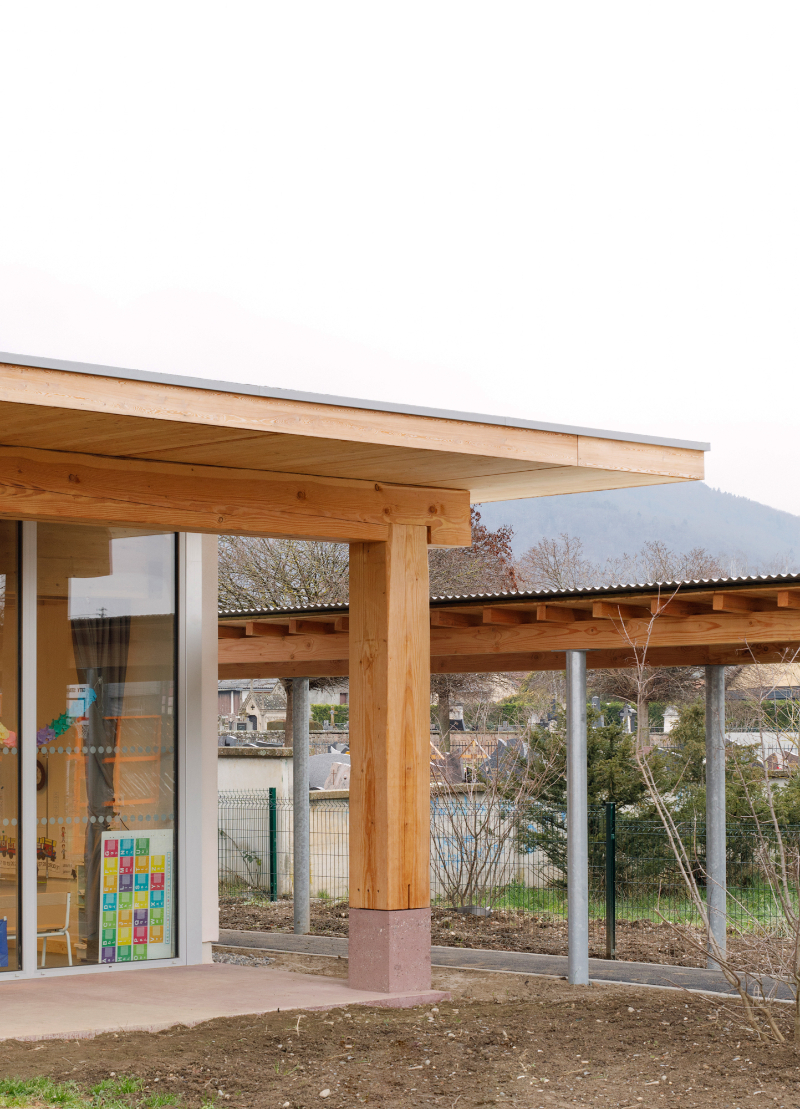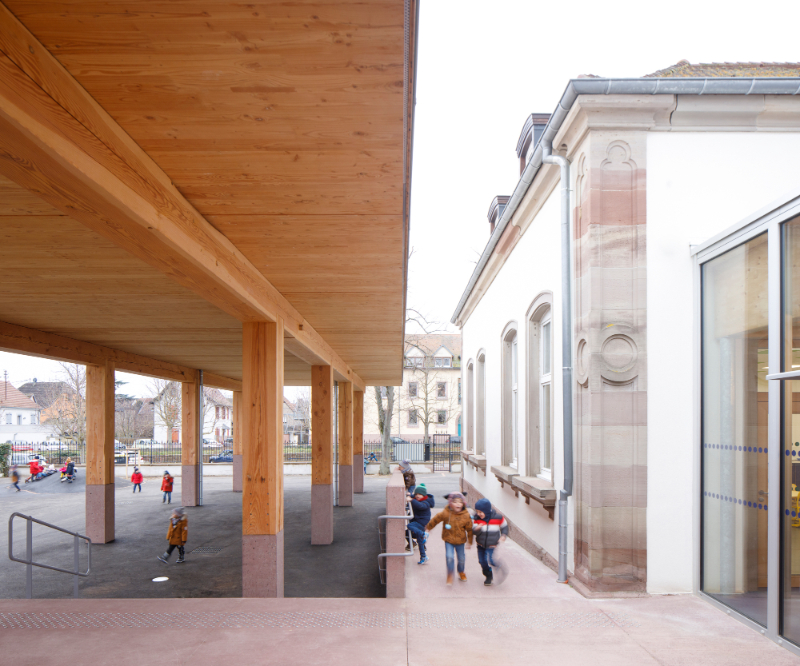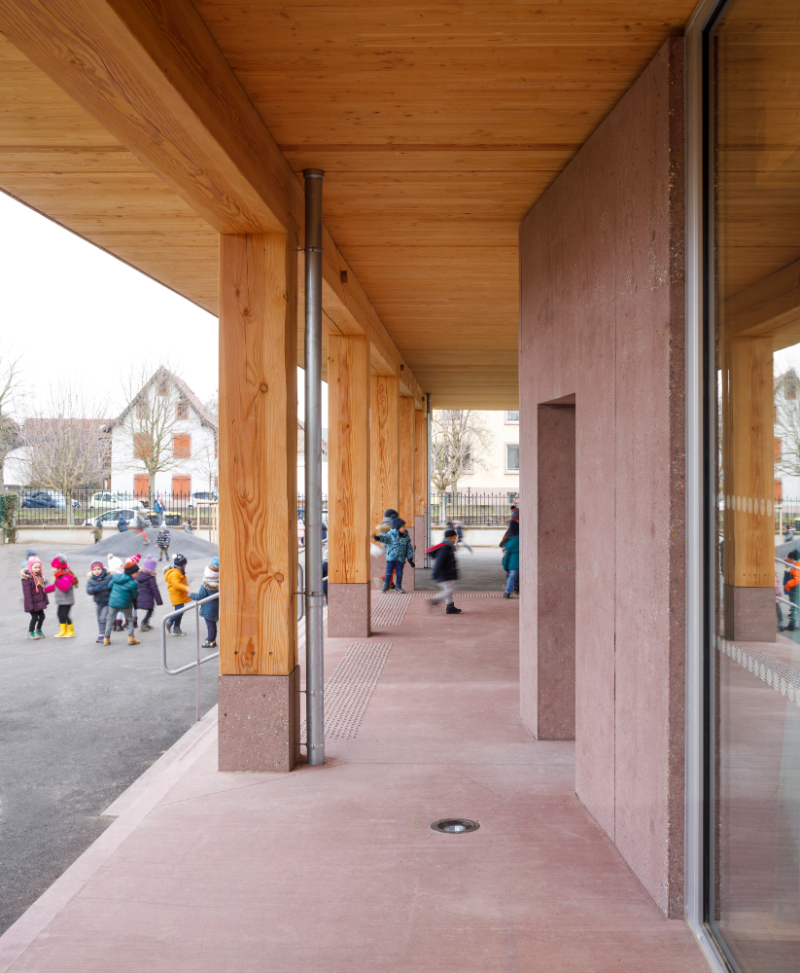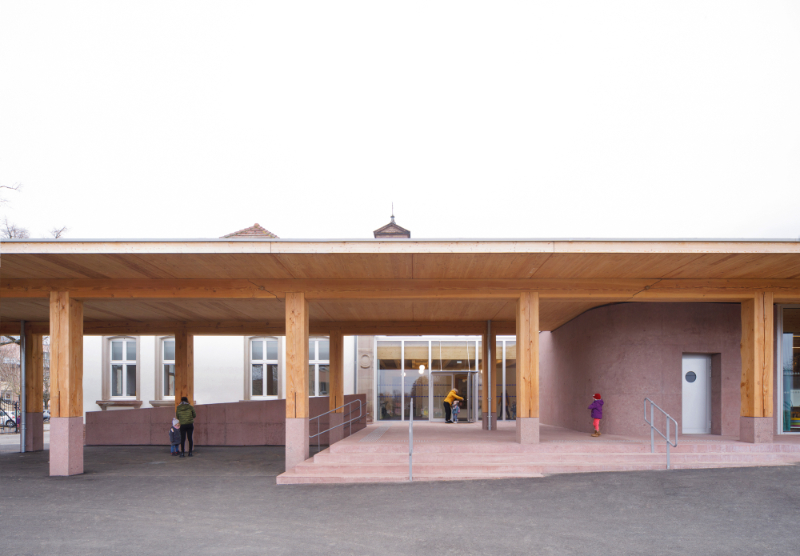Often neglected, we believe that the coverplayground is the most important space in a school and becomes the starting point of this project. It sequences the path of the children from the street to the classroom, passing through the hall and the corridor. It acquires such strength that it alone, draws the new facade of the extension.
Composed of non-standard section wooden pillars colonnade, there is a desire to express the raw nature of things. A tree, a pole. Defects, knots and splits are accepted expressing the uniqueness of each element in a poetic and didactic approach. We have our favorite pillar, just as we imagine that the children will have theirs.
The oversizing expresses a humble-monumentality that allows it to connect to the classical architecture of the existing building. Those section also allows to step away from the language of standardization. Everything here is shaped to be placed in a single location in an aesthetic dimension of assembly techniques. Each pillar supports partly hollowed-out beams, which are assembled by Jupiter traits, tightened by oak keys. The skill of the carpenter is valued, forming from irregular elements an orderly architecture. The only exception that confirms the rule is that the colonnade is topped with CLT wooden slabs that brace the whole structure and refine the design into a Stonehenge in wood.
The coverplayground rests on a sculptural volume of sandblasted concrete looking like to the cut stone of the existing building. The hall, at the junction between the extension and the existing building whose outer facades become interior, extends in a wide central corridor. It serves four classrooms separated from each other by a crank-shaped wall compartmentalizing different spaces.
The interior architecture is full of peculiarities, materials and colors. Different types of wood blend together depending on the use. Ceilings are made up of visible solid spruce beams. The furniture is freely placed. Benches are made of beech wood while the classroom cabinets are made of oak. The glass walls are accompanied by curtains. The architecture draws from the heterogeneity of materials, polychromy and the profusion of small intentions to give it a domestic character suited for appropriation.

